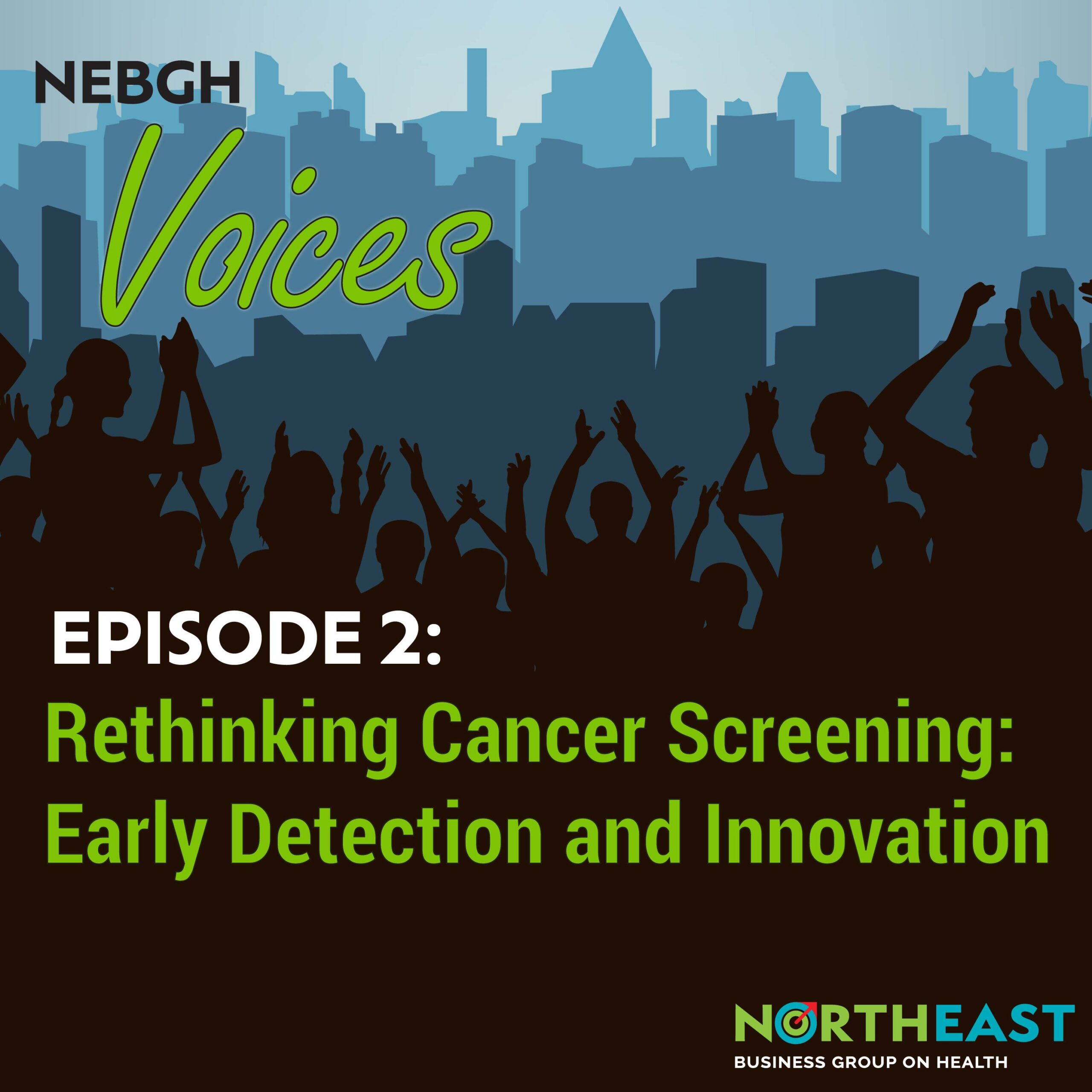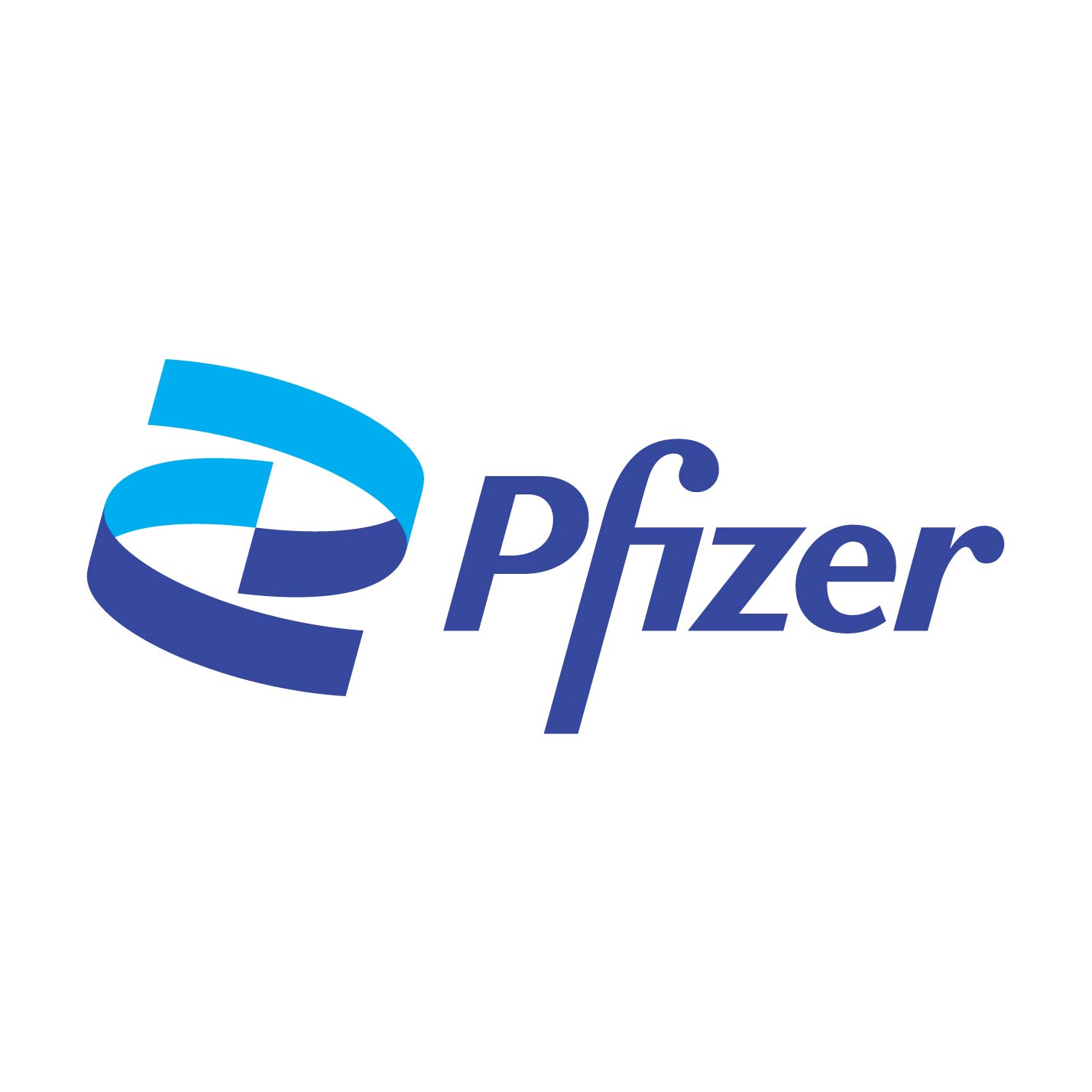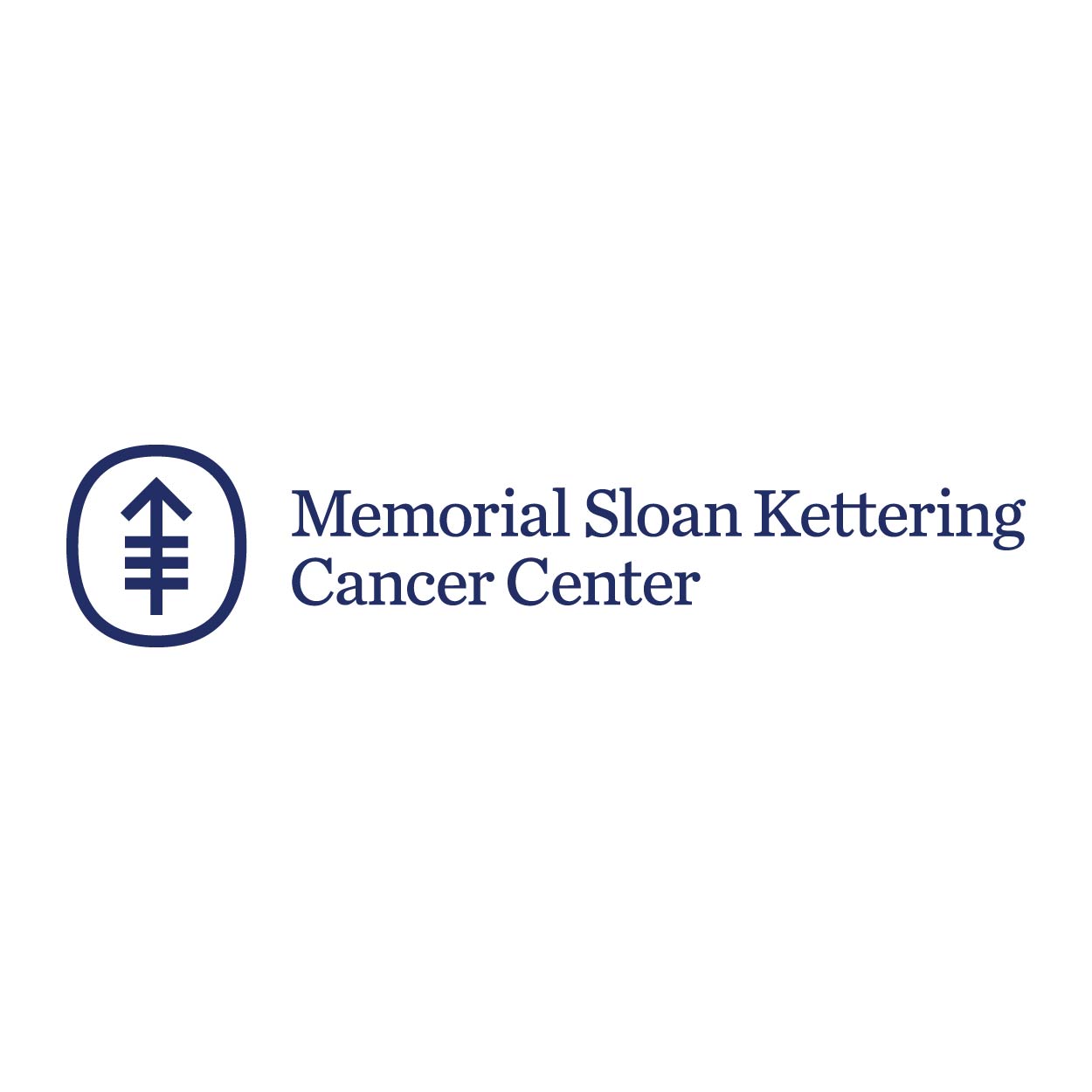Kim
Hello everyone. I’m Kim Thibodeaux. It is my pleasure to welcome you to NEBGH Voices. I ask you to relax, get in a reflective mood, and be ready to learn something new. Today’s guest is guaranteed to give us something to think about. I’m pleased to welcome to the show Dr. Eric Klein. Dr Klein is a distinguished scientist at Grail. His work at Grail has helped to propel blood-based multi cancer early screening into clinical practice. Welcome to the show Dr Klein!
Dr. Klein
Thanks, Kim. Nice to be here.
Kim
Well, let’s jump in. I’d love to learn a little bit more about you, so Dr. Klein, tell us about yourself and tell us what grew drew you to the work at Grail.
Dr. Klein
Sure. I’m a urologist by training, and I specialized in the management of urologic cancers. And I got involved with Grail in 2016 when they started their very first clinical trial, a case control study, to see if this brand new technology, this blood based screening technology, would work, and I got very interested in the science, and I was intrigued by the results. And after I retired from my clinical practice and took a little time off, I had the opportunity to join Grail full time and help to continue to develop this whole field, which I think is going to have a huge impact on cancer in the United States and around the world, how we screen patients and improve outcomes for everybody.
Kim
Good. I look forward to talking more about that, Dr. Klein. Let’s um, let’s level set a little bit. We always like to do that for our listeners. Around cancer screening, we certainly hear a lot about cancer screenings. The need to stay on top of screenings for our health. So just remind us. Help us remember a few things. Which cancers do we currently screen for? Who recommends these screenings, and in terms of the cost involved, do private plans, Medicare, Medicaid, do they pay to cover these screenings?
Dr. Klein
So we currently screen, in standard practice, for five cancers in people at average risk for cancer. So that’s breast cancer with mammography starting at age 40, now ages 40 to 74 cervical cancer screening, ages 21 to 65 every three years, or a pap smear and an HPV testing every five years, starting at 30. Colonoscopy recommended. New recommendations have dropped the age starting down to 45, 45 to 75.
Dr. Klein
Um, high risk people for lung cancer. That’s so that’s smokers, low dose CT scanning, and then finally, a prostate cancer with PSA. What’s really important about these is that all of these tests have been shown to reduce the death rate, to reduce more mortality from these cancers, and so our opportunity here is to take this new MCED technology and add to the value that the current screening tests bring.
Dr. Klein
Generally, you asked about coverage. Generally, these preventive tests are covered, um, both private insurance, as required by law, and Medicare and Medicaid generally cover the ones that have the highest U.S Preventive Services Task Force recommendation. That’s a group of experts that reviews data, and clinical trial data, and modeling data on all of these, and periodically issues recommendations about where these screening tests should be used and who they’re appropriate for.
Kim
And so you talked about a change in colorectal cancer screening. So that came from the US Preventative Services Task Force to take the age from 50 to 45 for colorectal cancer as an example.
Dr. Klein
It did, and this is really important. There are estimates that the worldwide cancer burden is going to double in the next 15 years, and there is a little bit of alarming data showing that the generations behind the baby boomers are more likely to be affected by cancer than Baby Boomers were, so we’re going to see a significant uptick in probably all cancers, and it’s important that we evaluate and understand how these new tools can help solve that issue.
Kim
Let’s pivot to that, Dr Klein. So we can’t have any health conversation without an acronym making an appearance. So today is no exception. In your case, Dr Klein, we want to talk about a test called M-C-E-D, or sometimes referred to as MCED. So tell us, what does MCED stand for? How does the testing work? What kind of test are we talking about here?
Dr. Klein
So MCED, stands for Multi Cancer Early Detection. And what the new paradigm is the opportunity from a simple blood test using next generation sequencing technology, which is the same technology that was used to sequence the whole human genome, we can now detect in the presence of a cancer, a cancer signal by looking at what are called methylation patterns, sort of a fingerprint across cancers and, and what Grails technology is based on is the fact that multiple different kinds of cancers have the same methylation fingerprint. So as one of my colleagues likes to point out, if you’re unlucky enough to get cancer, you can’t pick what cancer you get. And so the value of a test like this is from a single blood test, as you can be screened for multiple cancers. That’s where the M comes from.
Dr. Klein
The early detection part comes from the realization, and the really the observation in all cancer disciplines that we have a much better chance of curing someone when the cancer is caught early. And so this technology, if widely adopted and used in a popular at a population level, in repeated fashion, as is colonoscopy and mammography and mammography and so forth, gives us the opportunity to not only test for cancers that we don’t screen for now, but also to detect them at an earlier stage, when they’re more likely to be curable. That’s the essence of the technology.
Kim
Got it, got it. So are we imagining at some point that this test will replace the other cancer screenings that we have, and does the test actually diagnose cancer?
Dr. Klein
So two important questions, currently, this test does not replace current screenings. It does not. It is possible. This is just my opinion and my hope, I guess, more than that. That, eventually we could move to noninvasive ways of detecting cancer. That is, you know, that’s sort of the Emerald City that we’d like to get to but not there anytime soon. One thing I’d like to point out, for example, about colonoscopy, one of the advantages of colonoscopy is, not only is it a screening test and a diagnostic test, but it’s also a preventative test, so, or a preventative procedure, so that if you have a colonoscopy and you have an advanced adenoma that could turn into cancer, you can have it removed, and that really reduces that’s been shown to reduce the mortality risk. It’s hard for me to see how a blood based test is going to replace something like colonoscopy, unfortunately, because of that. It’s also important to understand that all screening tests, including blood based MCED tests, are screening tests. They do not diagnose the presence of a cancer. So if you have an abnormality on a mammogram, you have to go through a diagnostic evaluation with a biopsy if you have what we call a cancer signal detected on the blood test, on an MCED blood test, that suggests that you need to have a diagnostic evaluation.
Dr. Klein
One of the nice features about Galleri is that in addition to telling you whether or not a cancer signal is detected or not, it predicts with about 90% accuracy what we call CANCER signal origin, where the cancer is likely coming from, or what kind of cancer it is, and that helps tailor what the diagnostic evaluation ought to be. That’s another unique feature of this test.
Kim
Well, I’m sure that you’re used to the next to the next question. Maybe when some folks hear this, they’re going to ask, you know, wait, wait, can I get this test? I haven’t heard about this. Tell me about the tell me about the guidelines. Who qualifies for the test? Is it by a certain age? Is it by risk factor, family history? Who qualifies for it? And what do you tell folks when they say, “Hey, can I get this test?”
Dr. Klein
Sure. When we think about cancer risk, I would say most of the public thinks about smokers because they know that they’re at higher risk of cancer. But the reality is, most cancer cases in a population occur simply due to age, and if you’re over 50, you’re 13 times more likely to get cancer than a young person. And the worrisome news as I get older is that risk goes up about 7 or 8% every year. So the main focus of Galleri and MCED testing is in the same population that all the other standard of care screening tests are, that’s generally considered people between 50 and 79.
Dr. Klein
But there are some other high risk populations where it might be appropriate to consider this kind of screenin. And so that’s certainly smokers, obesity as a risk factor for cancer, newly diagnosed diabetics are at risk for pancreatic cancer, individuals who are immunosuppressed, individuals with a strong family history of cancer, and individuals with genome with known genetic syndromes like BRCA or Lynch syndrome. All of those are appropriate populations to have a conversation with your physician about whether or not this technology and this test Galleri might provide some value to you,
Kim
Understood, understood, really helpful to frame that. Dr. Klein, I, I’m imagining that folks want to know, how often will they get the test if they if they qualify. You talked earlier about the guidelines for how often we should get mammography, how often we should get a colonoscopy. Are there clinical guidelines or guidance on how often folks should potentially get this test?
Dr. Klein
Now, there is some guidance, and it’s, it’s an area of emerging data, and the guidance currently that we recommend people consider is to have the Galleri test once a year. And that fits very easily with, you know, standard of care practice where you’re thinking about, you know, I need a colonoscopy at a defined interval. It’s not once a year. A mammography every year if you’re at high risk, or every other year, that sort of thing. But if you’re getting routine lab work, you know, this is an easy thing to add once a year to your routine physician visits, that sort of thing. The reason for this is actually based on some science. So we’ve done two studies now that have suggested that, on average, we can see a signal of cancer in the bloodstream roughly a year before the cancer is actually apparent clinically. And the big study that we did was a biobank study with the American Cancer Society, where we had serial blood samples in a number of patients who were ultimately diagnosed with cancer dating back as long as eight years prior. And we analyzed those blood samples every year up to eight years. And what we found was that the average time interval that we saw the signal in the blood without anybody being diagnosed the cancer with cancer at that time, the average time it took them to be diagnosed cancer was about 323 days, fits very nicely with the concept of once a year screening. And we just published, or just presented some data at the European Society of Medical Oncology from a different prospective study, our big study called Strive, which studied women who were presenting for mammography, and we could see a signal in some cancers as early as 30 months prior to the actual diagnosis of cancer, but the average was 275 days, which is in the same ballpark around 300 days, something like that. So the current data supports doing this once a year.
Kim
Interesting, interesting. So we’ve covered a little bit about who qualifies how often potentially to get the test. So let’s learn a little bit more about sort of the backstory and the clinical data around m said, so is this, is this test approved? And I just want to reinforce for our listeners that it is a blood test. Is this test approved by the FDA, the Food and Drug Administration, and let’s talk Dr. Klein, about coverage? Is private insurance, Medicare, Medicaid, paying for this test? Can you shed some light on those two areas for me?
Dr. Klein
Yes. The test is currently not approved or cleared by the FDA, and the reason for that is that we haven’t asked them to make a determination on this yet. This is brand new technology, and we have been in deep discussions with the FDA for several years, talking with them about what sort of evidence base would be necessary for them to make an evaluation on whether or not the test is safe and effective, which is usually what the criteria are. And we have been in that discussion and designed help, that those discussions help design the very large clinical trials that we have. We have almost 400,000 participants in our clinical trials, either completed or ongoing, and so forth. And so a formal application to the FDA is forthcoming in the future. What’s here’s what’s important, though, the test is available on the open market, and it’s regulated under a federal law called CLIA, and the Clinical Laboratory Improvement Amendments Act of 1988 for high complexity testing. And Grail qualifies under the CLIA Act, offer this, and we’re also certified and accredited by the American College of Pathologists. So lots and lots and lots of tests that are used in routine medical care today are not FDA-approved, but are available through the CLIA pathway. And to answer your other questions in terms of insurance coverage, generally speaking, that the test is not covered by Medicare, Medicaid or private insurance, with a few exceptions.
Kim
Got it, got it. So one thing to have a test, as you said, it’s available, it’s on the open market. But certainly, accessibility and access are equally important. I… uh.. maybe you can share the cost of the test, but I know it’s not at a price point that maybe the average American you know, might be able to afford it. But I also know that that you guys have been thinking about how to make the test available to underserved populations. We may be even further away from underserved populations being able to access this test. So can you talk a little bit about what you as a company are doing to sort of tackle this issue and work towards making the test more widely available, particularly to underserved communities?
Dr. Klein
Sure, the current cost of the test is $949
Kim
Thank you.
Dr. Klein
Which can be covered by a, um, a health savings account. And sometimes it was offered as an employer benefit. We have a number of employers that we’re working with that are offering this as a benefit, and a number of life insurance companies are also offering it, after qualifying for life insurance. Not to decide if, if you get life insurance or not, but they’re offering it as a benefit afterwards.
Kim
That’s a good clarification. Thank you.
Dr. Klein
Yeah, it is. It’s no it’s really important. It’s to help promote wellness so and and make people aware of their health. We have a number of really important efforts in terms of access and accessibility and so forth. So there’s the Whitman Walker Institute in Washington, and the Cancer Support Community, both of which have extensive outreach to underserved communities, and we are working with them to make the test available through their auspices. We have a partnership with Ochsner Health in Louisiana, and they launched an MCED Health Equity Demonstration program to improve cancer detection rates in the underserved community in Louisiana. We have a number of health systems that have made the test available free to certain people using philanthropic funds or foundation funds to pay for it and make it available. And then, in the context of the clinical trials that I mentioned, we have worked very hard to be sure that we are reaching underserved populations. One of those includes the Reach trial, which is a trial in the Medicare population, and in fact, partnering with CMS. CMS is paying for the tests and for the diagnostic evaluations in the reach trial, and Grail is supporting all the other logistics for doing the trial. And we are focusing on achieving 20% of that participant population to be underserved. And in the big Pathfinder two trial, which is 35,000 individuals in the general population that we just completed accrual on, we exceeded our accrual goals in the underserved population of 20%, so we are going to have lots of data available to understand what the needs are in that population in terms of interpreting the test and getting access to diagnostic testing and so forth. It’s a real commitment that we’ve made.
Kim
That’s great. I’m glad to hear it. I think, you know, disparities are such a huge issue, and we often, you know, do hear data that underserved communities are being diagnosed later, when perhaps there is less of a chance for a cure, so I appreciate you sharing what you’re doing to reach some of those communities. You’ve touched on this a little bit. Dr. Klein, but let’s expand the conversation around the future of Multi Cancer Early Detection testing. As you said, you know, this is fairly new science, right? Fairly new technology. Do you imagine that this would become a standard screening test, a population-wide screening test, things like mammography, colonoscopy? Do you imagine the future it could stand side by side with some of that other regular testing?
Dr. Klein
Absolutely, yes, that’s the hope. And one of the things I didn’t emphasize earlier on is why that’s important. You know, we currently screen for these five cancers, and they all reduce mortality. But despite the fact that we do that in the United States, we still lose 600,000 people a year to cancer. And one significant reason, not the only reason, but one significant reason for that, is that the current screening tests only cover about 30% of cancer diagnoses, and in fact, only 14% of all cancers in the US are detected by screening. There are a whole lot dozens of other cancers that people die from that we have no screening tests for and improvements in colonoscopy and mammography are not going to address that problem. They’ll make screening for those specific cancers better, but they’re not going to address the fact that people die of ovarian and pancreatic cancer and other cancers that we don’t screen for. So the real promise here is to broaden not only access, but to broaden the number of cancers that we can screen for, and that, in my view, is likely to make a difference at a population level, in terms of cancer mortality.
Kim
And you said you can have, right now, hundreds of 1000s of people in trials in the US and abroad. Is that correct?
Dr. Klein
That is correct. And we have over 200,000 tests processed through having made it available commercially. So we have a huge database of information. So this technology is based on genomics, which advances all the time. If we’re called a human first human genome, I think costs $300 million to sequence, and you can sequence a whole human genome for $1,000 now. And there are some companies that are working for special circumstances to be able to do that in a matter of hours. That’s really remarkable. That’s not in the cancer screening space, a different space, but it just tells you about the technology. And then the other part is machine learning and artificial intelligence, which is all the rage. And so as we get more data we can the nice thing about these machine learning models is you can update them with new data and refine them and so forth. And so I’m very optimistic about the future.
Kim
Yeah, that’s great to hear Dr. Klein. So let’s drill down for a minute on how this affects employers that do offer benefits. I think you know that that NEBGH represents many large, self-insured employers. Are you working with them to add MCED into their you know, benefits offerings, as you know, in that particular context, in the employer space?
Dr. Klein
We are. We work with many, many employers, and we talk to many about our excitement about the technology and what it could bring to them. Employers are focused on the well-being of their employees for all the right reasons, and one of those right reasons is productivity. If you’re, if your workforce is dying, if someone in your workforce is diagnosed with a late-stage cancer, then they are out of action and not able to produce and that’s the tragedy for them, personally and so forth. But it also makes it hard for employers. It’s expensive to train new people or to ask other people to cover while someone might be out for treatment and so forth and so. Finding cancer early can help prevent that, because early-stage cancers are easier to treat, and people can get back to their families and their normal lifestyle and back to the employment, you know, faster. I mean, the numbers are really startling. And the first year after diagnosis, especially for those with metastatic cancer, that means more disability claims, more missing work days, and indirect costs that are estimated to be up to over $20,000 a year, in addition to the psychological toll that it takes on coworkers and all of that. So.
Kim
Yeah, Dr. Klein, absolutely. Our employers tell us it continues to be, in most cases, the top cost driver in the workplace. You know, within the coverage conversation. Dr. Klein, I just want to thank you so much for joining us today. This has been a great conversation. I’ve learned so much, and we appreciate you joining we do hope you’ll come back and join us again.
Kim
As our episode comes to a close today, I want to recognize our sponsors, Pfizer and Sanofi, as well as our presenting sponsors, Grail and Memorial Sloan Kettering Cancer Center. These wonderful partners make it possible for us to share this context with you. This is NEBGH Voices. We hope you’ve learned a new way to stay healthy. Until next time, I wish you wellness.






